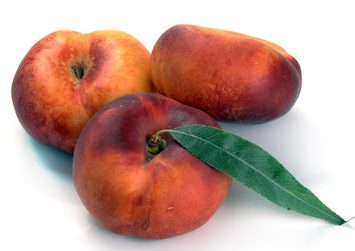
Health Benefits:
Aids in digestion
Fights free radicals
Improves eyesight
Improves hair skin and nails
May reduce risk of cancer
Prevents sinusitis
Protects skin from UV rays
Provides energy
Nutrition:
Serving size: 1 fruit; Calories: 59; Fat: .4g; Cholesterol: 0mg; Sodium: 0mg; Carbs: 14g; Fiber: 2.3g; Sugars: 13g; Protein: 1.4g; Potassium: 8%DV; Vitamin A: 9%DV; Vitamin C: 16%DV; Calcium: 0%DV; Iron: 2%DV
Did You Know?
- Nectarines come from the same family as the rose and are also related to the almond.
- Nectarines are a fuzzless variety of peach. They are not a cross between a peach and a plum.
Ways to Eat:
- Raw
- Baked
- Sauteed
- In a pie or tart
- On a salad
- In oatmeal or yogurt
Farming Trivia:
- California grows over 95% of the nectarines produced in the United States.
- Occasionally when peach trees are crossed or even self pollinated they will produce some fruit whose seeds will grow into nectarine trees and others which will be peach trees.
- Nectarines can be planted and grow best during the spring/summer seasons
Note: Always consult a physician for any specific health questions and concerns. Some of this information may be subject to change should there be any new findings from Federal Health Administration (FHA), Food & Drug Administration (FDA), American Medical Association (AMA), American Cancer Society (ACS), and / or other leading food, nutrition and medical advisors.

